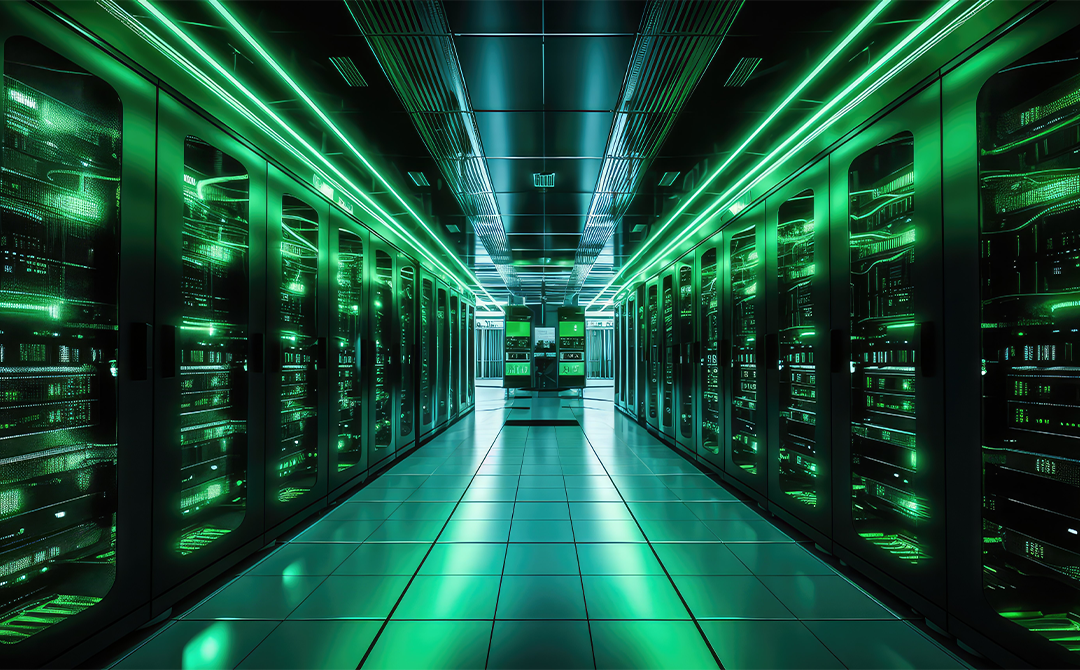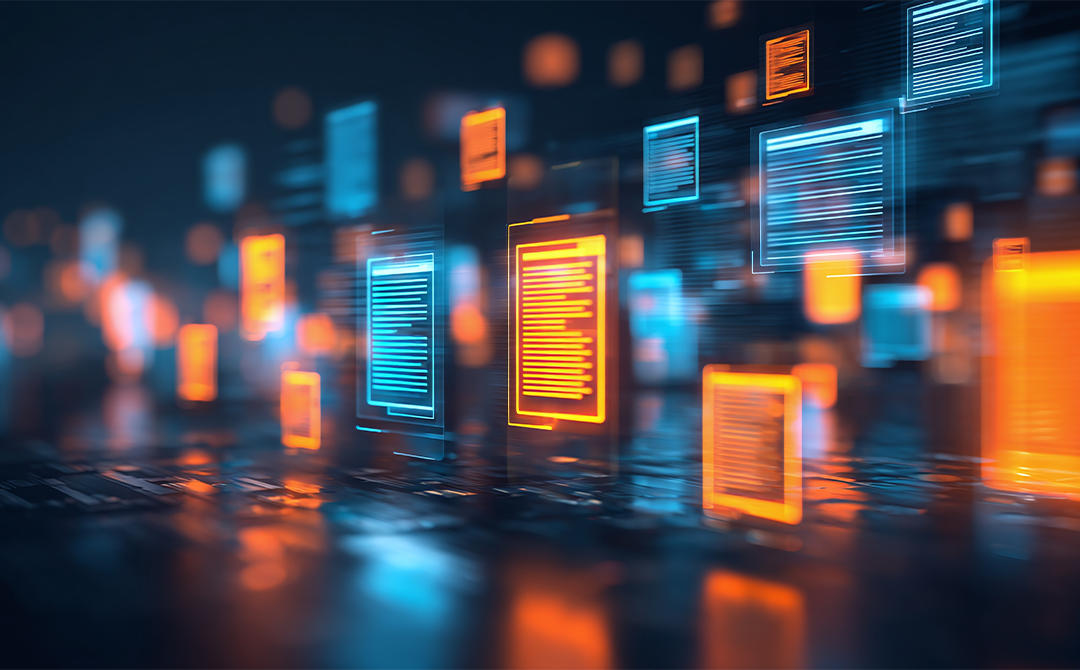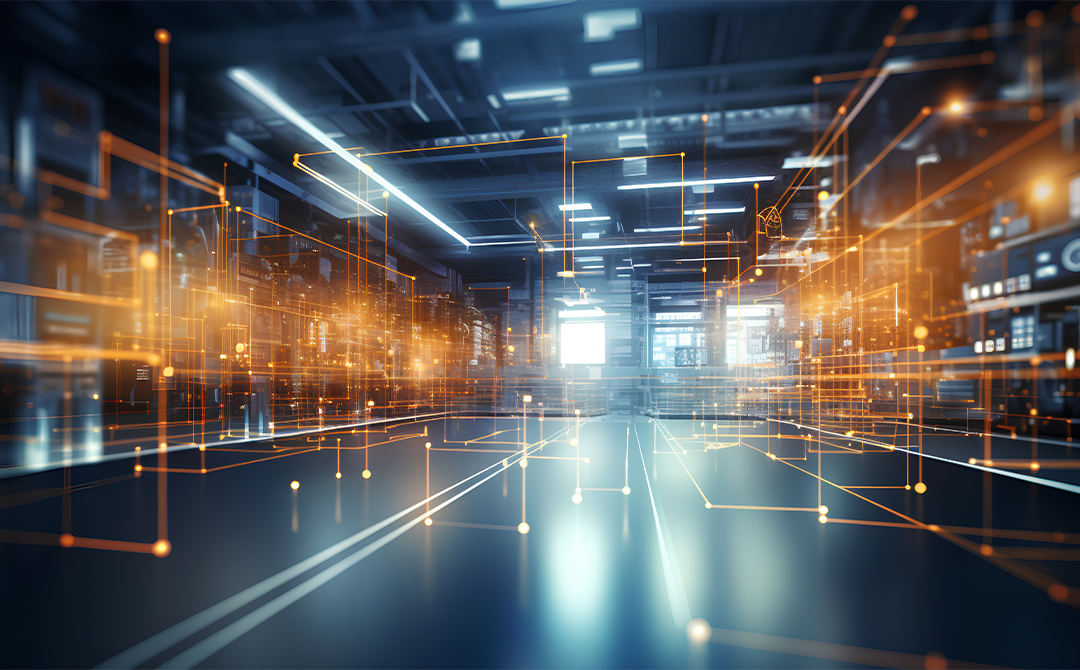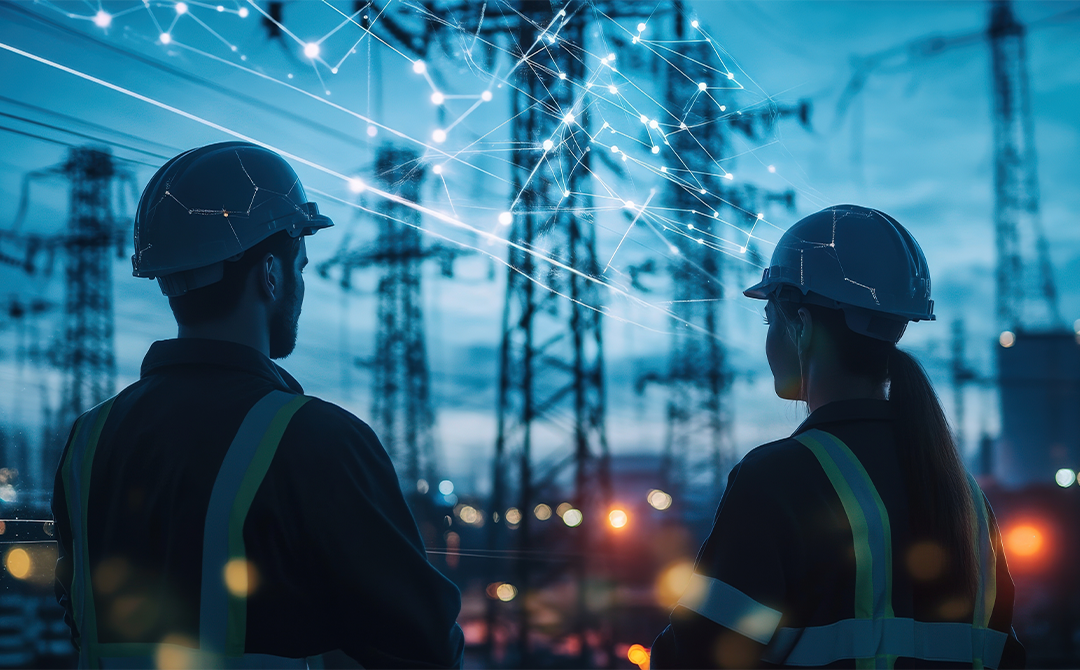
A few years ago, AI was the hero of almost every tech headline. It could diagnose diseases, reduce waste in supply chains, and even help combat climate change. The future appeared to be clean and unstoppable.
Beyond those amazing breakthroughs, however, are rows upon rows of massive servers that are running nonstop and chewing through electricity by the megawatt. Energy consumption does not just show up in a utility bill; it shows up in the atmosphere. The generative AI energy consumption is massive. Generating one large AI model is the equivalent of putting more CO₂ in the atmosphere than driving five cars for their entire lifetime. As AI becomes bigger and more complicated, you can imagine how its footprint is greatly increasing as well. And this is where Sustainable AI or Green AI comes in.
In this guide, we will understand what it is, why it matters in today's world, and how you can combine AI and sustainable development goals for your business in a way that does not leave a huge carbon footprint behind.
What Is Sustainable AI?
Sustainable AI refers to the design, development, deployment, and use of artificial intelligence systems in ways that minimize negative environmental, social, and economic impacts while maximizing long-term benefits for people and the planet.
Key Characteristics of Sustainable AI
- Energy-Efficient Models – Algorithms designed to reduce and minimize initial parameters and complexity of computations.
- Renewable Energy Integration – Green AI systems that are wind, solar, or any other clean energy powered.
- Eco-Friendly Infrastructure – Hardware and data centers designed with lower power consumption, cooling, as well as electronic waste.
Scope of Sustainable AI
It is applied in various areas that are efficiency-focused and conscientious when it comes to the environment:
- Manufacturing – Optimizing production processes to use less energy and waste less.
- Transportation – Improving logistical routes with reduced fuel and emissions use.
- Energy – Better managing renewable resources.
- Agriculture – Utilizing AI for precision farming that saves water and chemicals.
5 Key Metrics for Measuring AI’s Environmental Impact
First, to reduce sustainable AI’s environmental impact, you have to measure its impact. The five metrics that follow provide a clear view of where energy and resources are being used and where improvements can be made.
Carbon Footprint
The carbon footprint is the total emissions of greenhouse gases emitted from the lifecycle of the AI itself: model training, deployment, and operationally through use. To be clear, there are direct emissions from the on-site usage of power, and there are indirect emissions produced from the creation and transmission of electricity (scope 1, 2, and 3 operational emissions).
Energy Consumption
The total amount of electrical energy consumed from AI workloads through training, testing, and inference is termed energy consumption. Keeping up with Green AI task energy consumption will also facilitate the identification of unproductive processes, large models, and/or underutilised hardware that may be wasting energy.
Resource Efficiency
The term resource efficiency describes how efficiently the AI workloads use the available CPU, GPU, memory, and storage resources. As sustainable AI performance is tuned for improved resource efficiency, the energy demands are reduced, as systems deliver the required performance, and waste resources will be reduced.
Data Center Sustainability
Evaluates the environmental performance of data centers equipped for AI workloads, including PUE, renewable energy consumption, cooling system efficiency, and waste heat recovery systems. A reduced PUE and increased renewable energy consumption indicate an improved sustainable AI profile under the infrastructure.
Model Efficiency and Optimization
Evaluates whether AI models are built to deliver the appropriate accuracy with minimum computational cost. Metrics in this space include: number of parameters, operations per second, latency of inference, etc. AI model optimization techniques include lowering their energy consumption when going through their training and subsequently processing real-time actions, which lowers emissions over time. A proper check of the model efficiency and optimization could be a critical factor in ensuring that sustainable AI practices are followed.
How AI Can Make Supply Chains More Sustainable
The use of generative AI for sustainability can be a key driver for greener and more efficient supply chains. By deploying Green AI at different stages of the Supply Chain, companies are able to reduce waste, reduce emissions, and improve the efficiency of input concerning delivery speed and service levels.
Optimizing Logistics
Transportation regularly contributes the most to carbon emissions for a given supply chain. A green AI-based route optimization technology is ideal because it always considers real-time traffic data, weather data, and delivery constraints (such as drop-off times) for the lowest carbon-intensive route. In general, these optimizations lead to a reduction in vehicle wear and tear, idle time, and fuel used.
Example: DHL Express uses AI-enabled logistics planning up to 95% of the time to predict shipment volumes and optimize the courier's delivery route in the most effective way. This level of accuracy helps optimize a lot of their processes by decreasing emissions, idle time, unnecessary wear on vehicles, and fuel consumption.
Sustainable Manufacturing with AI
Manufacturing impacts the environment with significant energy and raw materials use. Using AI for sustainable manufacturing can monitor the efficiency of production systems, including identifying process inefficiencies, and can adjust in real time to lessen wasteful production activity.
Example: GE Digital’s Brilliant Manufacturing Suite, including the Plant Pulse Optimizer, utilizes AI-based analytics, enabling production teams to have visibility in real time of metrics such as inventory counts, yield generated, and completion of daily production plans. This system is being used across GE for healthcare manufacturing sites worldwide to map production problems, which helps identify bottlenecks, scrap, and product quality.
Real-Time Supply Chain Visibility
Inadequate visibility may lead to inefficiency in the supply chain management in terms of unwarranted stock, shipment delays, and wasted fuel. Green AI-enabled tracking platforms enable supply chain managers to monitor shipments, warehouse operations, and transport modes of all cargo continuously and end-to-end.
Example: A recent analysis of AI in the shipping Industry states that almost all shipping companies, like Maersk Line, are using AI for route planning, fuel-cost optimization, and predictive maintenance, which leads to measurable improvement in fuel efficiency and keeps emissions way down.
Waste Reduction in Retail and Warehousing
In retail supply chains, particularly perishables, a huge percentage of waste is from overstocking and spoilage. Green AI demand forecasting models use past sales data, historical market trends, and even the weather to accurately project a need.
Example: Walmart is running an AI pilot program that identifies the top causes of waste and suggests corrective action in real time. For example, if a fresh produce item is nearing its best-before date, a notification will be sent out, suggesting to either discounting for sale, donating it, or returning it to a supplier. As such, stores can reduce losses and play a relevant role in minimizing methane emissions linked to spoilage.
Sustainable Sourcing and Procurement
The environmental impact of a product partly hinges upon how suppliers are selected. Green AI can also consider supplier performance relative to emissions, water use, and ethically sourced materials to benefit the procurement team in finding sustainable supplier options.
Example: Unilever puts together R&D data, supply chain data, and applies a sustainable AI analytical framework to identify different / more sustainable ingredients and build more resilient supply chains. It supports using raw materials that are ethically sourced, and it creates formulations that are less complicated and are more environmentally sustainable, and lower costs.
5 Challenges of Implementing Green AI and Their Root Causes
The benefits of Sustainable AI are obvious; however, making AI green is inherently challenging. Companies face a variety of technological, operational, and financial barriers; most stem from common industry practices and infrastructure weaknesses.
High Energy Consumption in AI Models
AI models at a large scale are using enormous amounts of computational power - and consequently, electricity. The size of these models is literally in the billions of parameters. Furthermore, training and inference in this model mean a lot of hours of GPU time and storage.
Root Cause: The industry trend to create models that, at a minimum, do not sacrifice performance at the altar of efficiency, creates models will have more parameters than required, which consequently uses much more energy than needed.
Lack of Green Infrastructure
Numerous organizations continue to run AI workloads through legacy datacenters that are reliant on essentially non-renewable energy and ineffective cooling systems.
Root Cause: In order to upgrade to renewable-powered or highly efficient infrastructure, organizations would require a substantial capital investment and a long time for implementation, and some organizations put this off to focus on short-term cost savings.
Data Privacy and Security Limitations
Transitioning an organization’s AI workloads to renewable-powered cloud platforms is one way to promote sustainability, but often sensitive data cannot be handled via cloud computing due to considerations of compliance regulations, like GDPR or HIPAA.
Root Cause: Regulatory and security constraints force some organizations to keep workloads on less efficient on-premises systems.
High Costs of Implementation
Green, energy-efficient hardware; green cloud services; and improved sustainable AI cooling systems, all often have a high upfront cost.
Root Cause: Significant organizational budgeting/ expenditure priorities and schedules based on returns on investment can cause deferment of making such financial commitments, even after there are opportunities to invest that are relevant in terms of predictability of costs and environmental variables in the long run.
Limited Awareness and Skill Gaps
Organizations do not necessarily have the brains to measure, design, and implement sustainable AI solutions.
Root Cause: Green AI is a largely new application area, and educator streams or standards do not exist, rendering capacity building neither easy nor natural for teams or organizations.
Strategies to Overcome Green AI Challenges
AI sustainable development can have fewer environmental consequences, and through the proper approach, businesses can reduce them without compromising performance. Such practices, adopted by such leaders as Microsoft, Google, already demonstrate that sustainable AI is doable and lucrative.
AI Model Optimization
Streamlined sustainable AI models are more handy, faster, and have a different and better energy profile. Techniques used to streamline the operation of green AI models, such as pruning (removing excess parameters), quantization (reducing precision on parameters), and knowledge distillation (training a small model with the knowledge of a larger model), all lower computational costs without losing performance.
Energy-Efficient Hardware
Hardware influences the energy footprint of any AI workload. Processors that allow for increased performance per watt can give the same or higher computational output while reducing electricity consumption, operational costs, and emissions. Brands like NVIDIA and TPUs, for example, are built for modern Green AII workloads, but they are also designed to reduce the energy impact of large volume parallel computations as opposed to regular processors (CPUs).
Leveraging Green AI Cloud Services
AI workloads that are shifted to cloud providers that run on renewable energy could significantly decrease their environmental impact. Green AI cloud providers support their data centers with wind, solar, or hydroelectric energy, as well as optimizing cooling requirements, storage, and compute to maximize efficiency. This employment of green AI technology removes the intense energy usage prevalence for on-premises infrastructure and allows organizations to benefit from economies of scale for sustainability.
Google Cloud (Source), for example, has been carbon neutral since 2007 and has powered its data centers with 100% renewable energy since 2017; also, the data centers have industry-leading Power Usage Effectiveness (PUE) scores, meaning that a greater portion of the electricity draw is going directly into computing instead of overhead. Telecommunications companies or data utilization platforms, when enabled to host colorful workloads (i.e., large model training or persistent inferences), can significantly reduce emissions and the expectation to support high-traffic loads. Consequently, this approach combines performance gains with immediate advancement toward ESG and cost reduction objectives.
Adopting Renewable Energy Sources On-Premises
To organizations that continue to operate an AI workload locally, the advantages of using renewable sources of energy are some of the most direct carbon emissions reduction actions you can take today. This may entail putting solar panels, wind turbines, or even biomass systems, all of which can substitute the electricity you receive via a fossil-fuel-based power grid. Put renewable electricity production together with energy storage capabilities, and you have a power route to intensive Green AI workloads.
Embedding Sustainability in AI Lifecycle Management
When it comes to AI in sustainable development, it does not only include how a model is trained, but the whole lifecycle design, from design to decommissioning. Sustainability would comprise energy-efficient utilization of facilities, the consumption of the resources required at an optimal level, and monitoring the effect of emissions, in each stage: (Dataset Optimization, Model Development, Deployment, Monitoring sustainable AI Processes, and Decommissioning). By making sustainability a primary design and performance metric in addition to accuracy or latency, organizations can be enabled to make critical trade-offs that keep value-creating and environmental outputs constant.
Best Practices for Sustainable AI Development & Deployment
Implementing AI for environmental sustainability speaks to the whole lifecycle of the model. Organizations may lower environmental degradation and yet keep their performance high by adhering to some important principles.
Design for Energy Efficiency
Select Green AI model architectures that balance performance with minimal energy usage. Lightweight models with a focus can be designed that do not consume many computational resources, unlike general-purpose models that are too complex. It will be possible to achieve efficiency and sustainability by designing it according to the expected work.
Optimization During Deployment
Make sure that there is scaling in infrastructure and inference pipelines in sustainable AI so as not to agonize over unutilized resources. Deploy green AI capabilities to automatically shut down unused compute resources and scale workloads dynamically to ensure that computing systems are utilized in an efficient manner without so much over-provisioning.
Measuring and Reporting Impact
Monitor and measure the amount of energy used and the carbon footprint of Green AI workloads to inform optimization choices. Periodic measuring aids in support to align development and deployment with the aims of sustainability and organizational environmental commitments.
Lifecycle Considerations
Think in terms of the full lifecycle of sustainable AI models, including creation and retirement. Eliminate old models or poor-performing models in order to release resources and prevent continuous consumption of energy without seeing any significant value.
Real-World Examples of Sustainable AI
These are sustainable AI examples of how organizations are using AI for sustainability, achieving measurable environmental improvements as well as operational improvements.
AI in Renewable Energy
DeepMind has claimed that its machine learning model is able to accurately predict wind power production 36 hours ahead of time. Using these predictions, the system makes optimized energy commitments to the power grid a day ahead. This approach has increased the value of the wind energy produced by about 20% compared to scenarios without time-based grid commitments. DeepMind is one of the leading examples of AI for sustainable development. Source
AI in Smart Cities
A traffic management system powered by artificial intelligence and deployed by the Land Transport Authority in Singapore reads data in real-time that has to be sent via cameras, sensors, as well as GPS-enabled devices. Based on predictive analytics, it is capable of predicting when congestion will occur and turns traffic lights on and off to create a coordinated set of green lights that enables smooth traffic movement. This strategy has led to an increase in average vehicle speed, a reduction in traffic, fuel consumption, and emissions, in turn catering to the convenience of the commuter as well as the environmental goals of the city. Source
AI in Industrial Efficiency
Siemens employs sustainable AI-driven predictive maintenance across manufacturing facilities to detect early signs of equipment wear. This has reduced unplanned downtime by 30%, saving thousands of kilowatt-hours in energy and avoiding the waste of replacing parts prematurely. The approach also extends machine lifespans, lowering manufacturing’s resource footprint. Source
AI in Agriculture
Blue River Technology, now part of John Deere, developed the “See & Spray” platform, which leverages computer vision and machine learning to precisely target weeds. The implementation of this accurate spraying method reduces chemical usage by more than 90%, significantly lowering environmental chemical load and saving costs for farmers. Source
Aligning with Sustainable Development Goals (SDGs) Using AI
Sustainable AI is an enabler that is directly advancing UN Sustainable Development Goals, while decreasing its environmental impact, improving resource efficiency, and better supporting sustainable production.
SDG 7: Affordable and Clean Energy
Green AI also encourages energy system efficiency (lower cost) and stability (more consistent provision of energy) through demand forecasting, dynamic load balancing, and improved integration of renewable energy sources: solar, wind, and hydro.
In addition, using AI for sustainable development goals reduces peaks and optimizes storage capacity in batteries to better stabilize clean energy for consumers, while working to keep it cost-effective. Even as the world shifts toward greener low-carbon (greenhouse gas emissions) energy systems, which are relatively cost-effective to consumers and industry. Source
SDG 12: Responsible Consumption and Production
Green AI helps countries design smarter, less wasteful supply chains. It helps with planning the demands, reduces the levels of overproduced goods, and may enable the manufacture of goods in real-time. AI can be used to build intelligent monitoring systems that constantly observe the resources consumed at each manufacturing step and enable an in-depth interface with material, energy, and water consumption. It is possible to analyze how waste is created and ensure that all resources are used at the highest efficiency rate.
Resource utilisation reduces losses and at the same time embraces circular economy frameworks, sustains long product lifespan, and reuses or recycles for other purposes. Source
SDG 13: Climate Action
Green AI benefits in comprehending and minimizing climate risks. To this end, AI renders immense relative to information concerning the weather patterns, emissions, and environmental change comprehensible. Given these insights, governments, NGOs, and businesses can be aware of the areas where the risk is highest and can develop interventions and also gauge the effectiveness of climate programs. Source
Future Trends in Sustainable AI for 2025 and Beyond
The future of sustainable AI will be its optimization, visibility, and alignment with international sustainability objectives.
Advances in Green AI Research
Green AI research is moving towards building models that maintain high accuracy while being less computationally demanding. New methods, such as sparse modeling and neuromorphic computing, are beginning to replace or accompany paradigms of deep learning. For example, neuromorphic chips like Intel's Loihi can save up to 100x energy compared to traditional processors for specific workloads. Source
AI in the Circular Economy
Sustainable AI will be important for driving the circular economy by improving recycling processes, reducing material waste, and facilitating reuse. Companies have experimented with AI-based sorting technologies able to sense and sort recyclable items at > 95% accuracy. This, mixed with improved recycling processes, will increase recovery drastically and decrease waste to landfills.
AI-Driven Clean Energy Optimization
In complex renewable energy grids, sustainable AI may have quite a significant role to play in the balance between supply and demand. The decisions, which are taken by sustainable AI using the predictive models, should result in optimal use of solar, wind, and hydro power to reduce the use of fossil fuels. According to the World Economic Forum, AI-enabled efficiency and smart grids could bring an economic value totaling 1.3 trillion globally by 2030 and reduce global emissions by 5-10 per cent. Source
Why Partner with Tredence for Your Sustainable AI Journey
If you are looking for Green AI that is good for the planet as well as good for your business, Tredence can deliver on both counts. With deep AI know-how and a design focus on sustainability, Tredence is purpose-built to support organizations to reduce emissions, improve efficiency, and achieve the lowest possible impact on the environment.
Here's what Makes Them Different:
- Sustainable by Design: Models created with efficiencies in mind, with the lowest carbon impact.
- Industry Specific: Getting down to strategies based on industry, ie: retail, CPG, manufacturing, health, etc.
- Faster, Greener Deployment: Market accelerators focused on reducing timelines and resources, like ATOM.AI and MLWorks.
- Green Tech Partnerships: Working with entities like AWS, Azure, Databricks, and others that run on renewable energy.
- Proven Business Impact: Real, demonstrable ROI while meeting your ESG commitments.
Make sustainability an element of your AI strategy from day one. Team with Tredence and start building solutions that work smarter and tread lighter. Contact us today.
FAQs
1. How can AI-driven sustainable manufacturing improve resource efficiency and waste reduction?
Sustainable AI-based manufacturing enhances efficiency by constantly observing/detecting waste in production processes. It includes accurate efficiency modifications, reducing energy, raw materials, and operational costs. Waste reductions help decrease costs and minimize environmental impacts over time.
2. What are some top examples of sustainable AI in smart energy systems and utilities?
Sustainable AI in energy systems targets optimizing operations of grids, the prediction of demand, and better integration of renewable resources. It also contributes to equaling the supply and consumption more than before, which lessens pressure on the grid. The systems also contribute to sustainable development in the long run where there is reduced dependence on non-renewable sources.
3. How does green AI cloud infrastructure help organizations achieve sustainability goals?
Green AI cloud infrastructure assumes it is powered by renewable energy and/or promotes energy efficiency in optimizing computing operations. It maintains scalable AI workloads, without assuming a commensurate increase in carbon intensity. When organizations utilize this tech-enabled process, they receive potential mechanisms to align their tech operations with corporate sustainable development priorities.
4. How do you measure the environmental impact of AI solutions?
There are a few indicators used to quantify the environmental footprint of sustainable AI solutions, including carbon footprint, total energy consumption, and efficient use of resources. Quantifying the above indicators provides an objective view of the sustainability performance of a model. The organization can then rely on the data to determine optimization and deployment strategies.

AUTHOR - FOLLOW
Editorial Team
Tredence




